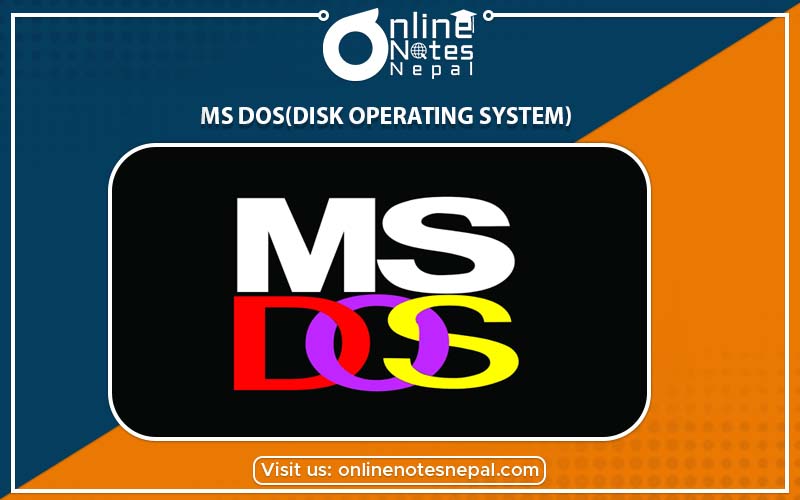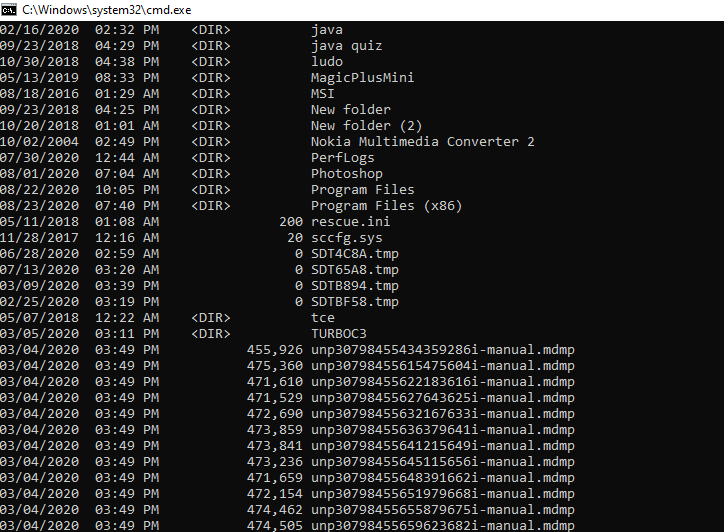Published by: BhumiRaj Timalsina
Published date: 21 Jan 2022

MS-DOS stands for Microsoft Disk Operating System. It has three essential files and many command files. These essential files are: IO.SYS (Input Output System), MSDOS.SYS (Microsoft Disk Operating System), and COMMAND.COM. These files are called system files of MS-DOS
Booting: The process of loading system files into computer's memory from disk is called booting. It starts when the computer is turned on. It makes computer ready to work. In the booting process, the command interpreter and system files are loaded into computer's memory. There are two types of booting: cold booting and warm booting.
File: The systematic collection of related data or information or program instructions is known as file. A unique name is given for each file to identify. Such unique name is known as a file name. A file name contains name and extension. The name helps to identify the file and extension helps to identify the type of file.
Directory: Directory is the location to store files and sub-directories. It contains information about files stored on the disk like name, size, last date of modification, time of creation and disk volume label.

Instructions given to the computer to work are called commands. These are the common words between the computer and the user. It gives order to computer system to work. DOS Commands are categorized in two types: Internal and External commands.
Internal command:Internal command are built in the COMMAND.COM files. It can be executed from any DOS prompt because each of the internal commands are memory resident. As long as computer is running, we are ready to give internal commands. Some of the examples of internal commands are: DIR, CLS, COPY etc.
External command:Commands that need external additional file with command.com are external commands. We need additional corresponding file to run these commands. For example we need tree.com file to run tree command. Example: XCOPY, CHKDSK, LABEL, TREE etc.